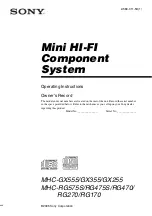
MagicQ User Manual
200 / 348
24.8.3
Attribute Test
The “Attr test” mode enables the palette to be tested on any patched heads of this type. In this mode moving up/down outputs
the Palette to all patched heads of this type.
24.9
Macros View
This view defines the macros that are available to control special features of the head such as turning the lamp on and off and
resetting motor channels. Every head should have a macro named “Lamp On”, “Reset” and “Lamp Off”. MagicQ uses these
macros in short cut keys for these functions.
Each macro has a name and a number of channels. Up to 10 channels can be controlled by each macro.
The macro data consists of fields to specify which channels are used (C1 to C10) and then the macro step data. The macro step
data consists of the number of steps followed by data fields.
The number of steps indicates how many steps are required in the macro – normally there are just two steps – the initial step to
set the correct levels and hold them for a time (e.g. 5 seconds) and then a step that returns the channels to their default values.
The step data is specified in the fields D1. . . Dx. For each step there is a time for the step, followed by the values for each of the
channels used for the step.
24.10
User Icons
It is possible to load user icons from bitmap and jpeg files. In File Manager click on the .png or.bmp files you wish to make into
icons. The icons will appear under the “User icons” icon class.
User icons are not stored in the show file, so when changing MagicQ systems it will be necessary to load the user icons onto each
MagicQ console / MagicQ PC system. We would be pleased to add any user icons to the main icon library – please send them to
.
24.11
Heads with multiple elements
MagicQ includes support for heads with multiple elements (e.g. RGB pixels), so that they can be patched in one action rather
than patching the individual elements separately. When these fixtures are patched they continue to be controlled as separate heads
with all the associated benefits. The head simply contains a count of the number of elements.
















































